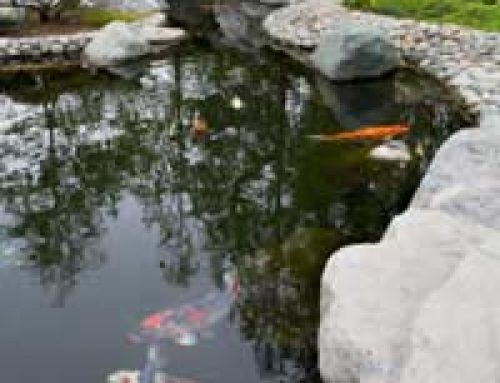 While ponds and water features can add so much to the garden, they also have an enormous fascination for children and this natural inquisitiveness may be their undoing. In the space of only a moment, a child can drown – so can children and ponds both be safely accommodated, or is it an either/or situation?
While ponds and water features can add so much to the garden, they also have an enormous fascination for children and this natural inquisitiveness may be their undoing. In the space of only a moment, a child can drown – so can children and ponds both be safely accommodated, or is it an either/or situation?
The issue is a serious one – drowning represents the third most common cause of accidental death in the home for the under-five age group. More than 100 children have drowned over the last ten years and according to recent Government research, around 80 per cent met their end not in their own gardens, but in ponds belonging to friends, relatives or neighbours. Making sure that your pond is safe is a concern for anyone who has children to visit – however briefly – every bit as much as it is for parents and unsurprisingly, many people have opted to fill in their water feature to make sure once and for all. While undoubtedly an effective solution, before you order up three tonnes of sand, there are one or two other options you might like to consider first.
Staying Secure
The only truly effective way to make sure that children cannot get into difficulties around water is to keep them away from it altogether. Since even the most careful parents or guardians cannot possibly be expected to keep an eye on their charges every minute of the day, achieving this generally means a physical barrier of some sort. It is important to bear in mind that infants and toddlers are quite unaware of danger and, while warning them is always a good thing, they will probably not begin to really take things on-board until they reach the age of four or perhaps five. Whatever type of barrier you use, it must take this into account – along with the startling speed at which even quite small infants can disappear and get into trouble.
Depending on the layout of the garden, it can sometimes be possible to securely fence the pond and surroundings, only allowing access via a locked gate. Although this is not often a realistic option for the average garden, when it can be done, it has the advantage of leaving the pond intact while preventing inquisitive youngsters from getting too close. However, the potential danger is still there – so it is does remain at best only a partial solution.
A secure grid over the whole of the pond surface is a more usual approach to let young children and ponds co-exist safely. For obvious reasons, the mesh used must be sturdy and strong enough to take the weight of a child without sagging and fixed above the height of the water, since small children and crawling infants can drown in very shallow water. A variety of types are available, ranging from straight-forward security grilles to specialist rigid plastic grids available from pond suppliers; the sort of thin steel mesh sold for small animal cages or chicken wire may be fine to keep out herons, but it is not suitable for this job. It is important to fix the cover very firmly to prevent adventurous youngsters finding their way underneath and to stop any chance of slippage and if the pond is a particularly large one, it may be advisable to support the whole thing on a frame. Once fitted, regular inspection is a must, to check for signs of wear or damage.
Safe and Sound
One way some people have chosen to get around the problem of keeping the sound of running water in the garden is to build a bubble fountain – a small reservoir pond, equipped with a pump, covered securely with mesh and topped off with an artistically arranged pile of stones. The pump drives the water up a short length of pipe which runs to the top of the stones, letting it run back down over them and return into the pond for re-circulation. There are other variations on the same theme on sale as ready-made features, such as artificial millstones or hollow pottery balls which channel a shallow flow of water over their surfaces, offering a safe way to provide a gentle and relaxing splashing noise.
Children and water are an age old combination, but for some the attraction is a tragic one as each year – especially the summer months – brings a new spate of fatalities and terrifyingly close, near-misses. Fortunately, being wise to the risk and taking suitable precautions should keep your own pond from adding to this sad set of statistics and even if you end up thinking that the safest solution of the lot is to fill in your water garden, it can always be replaced later – unlike a little life.
Last Modified: January 25, 2022




